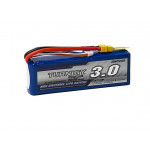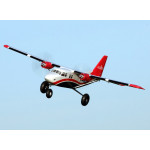
Flying a remote-controlled aircraft, particularly a multicopter, is a great deal of fun.
However, it comes with some risks that when managed appropriately, can be minimized significantly. We don’t want you to damage someone’s property or more importantly, injure yourself or others. So let’s get the serious part out of the way before we can have some fun! Please take the time to understand the risks outlined below.
Flight Computers
Take the time to understand the flight computer you’re using. Specifically, understand how different flight modes are initiated and what to do in the event something goes wrong. When preparing to fly with a GPS enabled flight computer, ensure that you have your home location locked which is achieved by having sufficient satellite connectivity. The manufacturer’s user manual will provide you with more information about this. Failure to have the home location locked may result in your multicopter flying away if you lose signal (some manufacturers won’t allow you to take off without a sufficient amount of satellites locked). It’s highly recommended that you know how to fly in acro mode or at a minimum, stabilize mode (where the multicopter returns to center/level when you let go of the sticks). This is important because flight computers can fail, so you will have to rely on your flying skills to correct the situation and if not managed properly, could lead to injury or damage to yourself or others.
LiPo batteries
Most likely, your multicopter will use a LiPo battery and your transmitter too! It’s very important that you never leave a LiPo battery unattended when it’s on a charge. LiPo batteries can catch fire with a tendency to rapidly combust when they do. If you have received a damaged LiPo battery or; if you have a damaged one, it’s best to discard it appropriately. You should never use a damaged battery as it may catch fire while charging or in use.
Propellers
Remain clear of propellers from the moment you connect a battery to a model. Even though the motor is small, some motors can reach high revolutions quickly and can cause temporary or permanent injury.
Flying responsibly
Always fly in-line with local laws and operate your aircraft in a safe place where you cannot harm yourself, anyone else, or damage property. Flying over roads, houses and other infrastructure is dangerous and should be avoided. Lastly, don’t fly near airports or in an area where air traffic is common. Written by Thomas
Hear it First: Join our Mailing List
Sign up to receive new product updates, exclusive discounts, news, and more!






